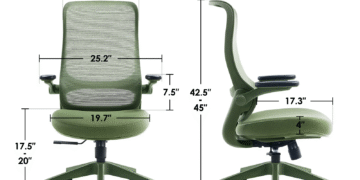The shoulder joint is one of the most intricate and mobile joints in the human body, allowing for a wide range of motion in various directions. Understanding the anatomy and mechanics of the shoulder is crucial for recognizing and addressing issues such as shoulder pain, stiffness, and limited mobility. In this comprehensive guide, we’ll delve into the intricate anatomy of the shoulder, shedding light on its complex structure and function.
The Shoulder Joint: A Marvel of Engineering
At the heart of the shoulder complex lies the glenohumeral joint, where the rounded head of the upper arm bone (humerus) articulates with the shallow socket (glenoid) of the shoulder blade (scapula). This ball-and-socket joint provides the shoulder with its remarkable range of motion, enabling actions such as flexion, extension, abduction, adduction, and rotation.
Supporting Structures: Ligaments, Tendons, and Muscles
Surrounding the shoulder joint are a network of ligaments, tendons, and muscles that work together to stabilize and support its movement. Key structures include:
Ligaments: Ligaments are tough bands of fibrous tissue that connect bones to bones, providing stability to the joint. In the shoulder, ligaments such as the glenohumeral ligaments and the coracohumeral ligament help reinforce the joint capsule and prevent excessive movement.
Tendons: Tendons are thick cords of connective tissue that attach muscles to bones, allowing for the transmission of force and movement. The rotator cuff tendons, including the supraspinatus, infraspinatus, teres minor, and subscapularis, play a crucial role in stabilizing the shoulder and facilitating its movement.
Muscles: The shoulder is surrounded by a complex array of muscles, each contributing to its stability and mobility. These include the deltoid, pectoralis major, latissimus dorsi, and various rotator cuff muscles. Proper coordination and balance among these muscles are essential for optimal shoulder function.

Common Issues and Conditions
Despite its remarkable flexibility, the shoulder is susceptible to various issues and conditions that can affect its function and mobility. Some common problems include:
Rotator Cuff Tears: Tears or inflammation of the rotator cuff tendons can lead to pain, weakness, and limited range of motion in the shoulder.
Impingement Syndrome: Impingement occurs when the rotator cuff tendons become pinched or compressed between the bones of the shoulder, resulting in pain and inflammation.
Frozen Shoulder: Frozen shoulder, or adhesive capsulitis, is characterized by stiffness and pain in the shoulder joint, often resulting from inflammation and thickening of the joint capsule.
Seeking Care from a Shoulder Specialist
If you’re experiencing shoulder pain, stiffness, or limited mobility, it’s essential to seek care from a qualified shoulder specialist. In Athens AL, Limestone County, and surrounding areas, shoulder specialists are trained to diagnose and treat a wide range of shoulder issues, from minor injuries to complex conditions. They may recommend conservative treatments such as physical therapy, medication, or injections, or in some cases, surgical intervention may be necessary to restore shoulder function.

Understanding the intricate anatomy and mechanics of the shoulder is key to maintaining its health and function. By taking proactive steps to address issues and seek care from a qualified shoulder specialist when needed, individuals can optimize their shoulder health and enjoy an active lifestyle free from pain and limitations.

















